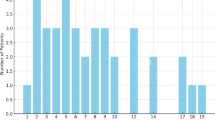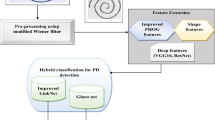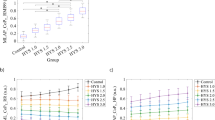Abstract
Diagnosing Parkinson’s disease (PD) promptly, accessibly and effectively is crucial for improving patient outcomes, yet reaching this goal remains a challenge. Here we developed a diagnostic pen featuring a soft magnetoelastic tip and ferrofluid ink, capable of sensitively and quantitatively converting both on-surface and in-air writing motions into high-fidelity, analyzable signals for self-powered PD diagnostics. The diagnostic pen’s working mechanism is based on the magnetoelastic effect in its magnetoelastic tip and the dynamic movement of the ferrofluid ink. To validate the clinical potential, a pilot human study was conducted, incorporating both patients with PD and healthy participants. The diagnostic pen accurately recorded handwriting signals, and a one-dimensional convolutional neural network-assisted analysis successfully distinguished patients with PD with an average accuracy of 96.22%. Our development of the diagnostic pen represents a low-cost, widely disseminable and reliable technology with the potential to improve PD diagnostics across large populations and resource-limited areas.

This is a preview of subscription content, access via your institution
Access options
Subscribe to this journal
Receive 12 digital issues and online access to articles
$119.00 per year
only $9.92 per issue
Buy this article
- Purchase on SpringerLink
- Instant access to full article PDF
Prices may be subject to local taxes which are calculated during checkout




Similar content being viewed by others
Data availability
Data supporting the results in this study are available within the Article and its Supplementary Information. Human study data are not publicly available because they contain information that could compromise research participant privacy. Source data are provided with this paper.
Code availability
The machine leaning code in this study is available via GitHub at https://github.com/JCLABShare/PD-PEN.
References
Poewe, W. et al. Parkinson disease. Nat. Rev. Dis. Primers 3, 17013 (2017).
Bloem, B. R., Okun, M. S. & Klein, C. Parkinson’s disease. Lancet 397, 2284–2303 (2021).
Weintraub, D. et al. The neuropsychiatry of Parkinson’s disease: advances and challenges. Lancet Neurol. 21, 89–102 (2022).
Kowal, S. L., Dall, T. M., Chakrabarti, R., Storm, M. V. & Jain, A. The current and projected economic burden of Parkinson’s disease in the United States. Mov. Disord. 28, 311–318 (2013).
Armstrong, M. J. & Okun, M. S. Diagnosis and treatment of Parkinson disease: a review. JAMA 323, 548–560 (2020).
Dorsey, E. R. et al. Global, regional, and national burden of Parkinson’s disease, 1990–2016: a systematic analysis for the Global Burden of Disease Study 2016. Lancet Neurol. 17, 939–953 (2018).
Aarsland, D. et al. Parkinson disease-associated cognitive impairment. Nat. Rev. Dis. Primers 7, 47 (2021).
Milekovic, T. et al. A spinal cord neuroprosthesis for locomotor deficits due to Parkinson’s disease. Nat. Med. 29, 2854–2865 (2023).
Pavy-Le Traon, A. et al. Clinical rating scales for urinary symptoms in Parkinson disease: critique and recommendations. Mov. Disord. Clin. Pract. 5, 479–491 (2018).
Fox, S. H. et al. International Parkinson and movement disorder society evidence-based medicine review: update on treatments for the motor symptoms of Parkinson’s disease. Mov. Disord. 33, 1248–1266 (2018).
Moustafa, A. A. et al. Motor symptoms in Parkinson’s disease: a unified framework. Neurosci. Biobehav. Rev. 68, 727–740 (2016).
Tolosa, E., Garrido, A., Scholz, S. W. & Poewe, W. Challenges in the diagnosis of Parkinson’s disease. Lancet Neurol. 20, 385–397 (2021).
Musubire, A. K. An international exchange observership at Yale University: a Ugandan physician experience. Neurology 92, 582–584 (2019).
Höglinger, G. U. et al. A biological classification of Parkinson’s disease: the SynNeurGe research diagnostic criteria. Lancet Neurol. 23, 191–204 (2024).
Sulzer, D. & Edwards, R. H. The physiological role of α-synuclein and its relationship to Parkinson’s disease. J. Neurochem. 150, 475–486 (2019).
Pereira, J. B. et al. DOPA decarboxylase is an emerging biomarker for Parkinsonian disorders including preclinical Lewy body disease. Nat. Aging 3, 1201–1209 (2023).
Wagner, S. K. et al. Retinal optical coherence tomography features associated with incident and prevalent Parkinson disease. Neurology 101, e1581–e1593 (2023).
Lotankar, S., Prabhavalkar, K. S. & Bhatt, L. K. Biomarkers for Parkinson’s disease: recent advancement. Neurosci. Bull. 33, 585–597 (2017).
Schiess, N. et al. Six action steps to address global disparities in Parkinson disease: a World Health Organization priority. JAMA Neurol. 79, 929–936 (2022).
Impedovo, D. & Pirlo, G. Dynamic handwriting analysis for the assessment of neurodegenerative diseases: a pattern recognition perspective. IEEE Rev. Biomed. Eng. 12, 209–220 (2019).
Broeder, S. et al. The effects of dual tasking on handwriting in patients with Parkinson’s disease. Neurosci. 263, 193–202 (2014).
Barrett, M. J., Wylie, S. A., Harrison, M. B. & Wooten, G. F. Handedness and motor symptom asymmetry in Parkinson’s disease. J. Neurol. Neurosurg. Psychiatry 82, 1122–1124 (2011).
van der Hoorn, A., Burger, H., Leenders, K. L. & de Jong, B. M. Handedness correlates with the dominant Parkinson side: a systematic review and meta-analysis. Mov. Disord. 27, 206–210 (2012).
van der Hoorn, A., Bartels, A. L., Leenders, K. L. & de Jong, B. M. Handedness and dominant side of symptoms in Parkinson’s disease. Parkinsonism Relat. Disord. 17, 58–60 (2011).
Rosenblum, S., Samuel, M., Zlotnik, S., Erikh, I. & Schlesinger, I. Handwriting as an objective tool for Parkinson’s disease diagnosis. J. Neurol. 260, 2357–2361 (2013).
Thomas, M., Lenka, A. & Kumar Pal, P. Handwriting analysis in Parkinson’s disease: current status and future directions. Mov. Disord. Clin. Pract. 4, 806–818 (2017).
Masud, M. K. et al. Superparamagnetic nanoarchitectures for disease-specific biomarker detection. Chem. Soc. Rev. 48, 5717–5751 (2019).
Lu, W., Shen, Y., Xie, A. & Zhang, W. Green synthesis and characterization of superparamagnetic Fe3O4 nanoparticles. J. Magn. Magn. Mater. 322, 1828–1833 (2010).
Jeong, U., Teng, X., Wang, Y., Yang, H. & Xia, Y. Superparamagnetic colloids: controlled synthesis and niche applications. Adv. Mater. 19, 33–60 (2007).
Cowley, M. D. & Rosensweig, R. E. The interfacial stability of a ferromagnetic fluid. J. Fluid Mech. 30, 671–688 (1967).
Neuringer, J. L. & Rosensweig, R. E. Ferrohydrodynamics. Phys. Fluids 7, 1927–1937 (1964).
Rosensweig, R. E. Ferrohydrodynamics (Cambridge Univ. Press, 1985).
Zhou, Y. et al. Giant magnetoelastic effect in soft systems for bioelectronics. Nat. Mater. 20, 1670–1676 (2021).
Qian, L. & Li, D. Use of magnetic fluid in accelerometers. J. Sens. 2014, 375623 (2014).
Bailey, R. L. Lesser known applications of ferrofluids. J. Magn. Magn. Mater. 39, 178–182 (1983).
Kole, M. & Khandekar, S. Engineering applications of ferrofluids: a review. J. Magn. Magn. Mater. 537, 168222 (2021).
Impedovo, D., Pirlo, G., Vessio, G. & Angelillo, M. T. A handwriting-based protocol for assessing neurodegenerative dementia. Cognit. Comput. 11, 576–586 (2019).
Balestrino, R. & Schapira, A. H. V. Parkinson disease. Eur. J. Neurol. 27, 27–42 (2020).
Kamran, I., Naz, S., Razzak, I. & Imran, M. Handwriting dynamics assessment using deep neural network for early identification of Parkinson’s disease. Future Gener. Comput. Syst. 117, 234–244 (2021).
Fereshtehnejad, S.-M. et al. Evolution of prodromal Parkinson’s disease and dementia with Lewy bodies: a prospective study. Brain 142, 2051–2067 (2019).
Zerveas, G., Jayaraman, S., Patel, D., Bhamidipaty, A. & Eickhoff, C. A transformer-based framework for multivariate time series representation learning. In Proc. 27th ACM SIGKDD Conference on Knowledge Discovery & Data Mining 2114–2124 (Association for Computing Machinery, 2021).
Wen, Q. et al. Transformers in time series: a survey. In Proc. Thirty-Second International Joint Conference on Artificial Intelligence 6778–6786 (Association for Computing Machinery, 2023).
Ahmed, S. et al. Transformers in time-series analysis: a tutorial. Circ. Syst. Signal Process. 42, 7433–7466 (2023).
Classify Time Series Using Wavelet Analysis and Deep Learning (MATLAB, 2024).
Szegedy, C. et al. Going deeper with convolutions. In Proc. IEEE Conference on Computer Vision and Pattern Recognition 1–9 (CVPR, 2015).
Zhuang, F. et al. A comprehensive survey on transfer learning. Proc. IEEE 109, 43–76 (2021).
Eklund, M. et al. Diagnostic value of micrographia in Parkinson’s disease: a study with [123I]FP-CIT SPECT. J. Neural Transm. 129, 895–904 (2022).
Urso, D., van Wamelen, D. J., Trivedi, D., Ray Chaudhuri, K. & Falup-Pecurariu, C. in International Review of Movement Disorders, Vol. 5 (eds Ferro, A. S. & Monje, M. H. G.) 49–70 (Academic Press, 2023).
Mirelman, A., Rochester, L., Simuni, T. & Hausdoff, J. M. Digital mobility measures to predict Parkinson’s disease. Lancet Neurol. 22, 1098–1100 (2023).
He, T., Chen, J., Xu, X. & Wang, W. Exploiting smartphone voice recording as a digital biomarker for Parkinson’s disease diagnosis. IEEE Trans. Instrum. Meas. 73, 1–12 (2024).
Yang, Y. et al. Artificial intelligence-enabled detection and assessment of Parkinson’s disease using nocturnal breathing signals. Nat. Med. 28, 2207–2215 (2022).
Liu, Y. et al. Monitoring gait at home with radio waves in Parkinson’s disease: a marker of severity, progression, and medication response. Sci. Transl. Med. 14, eadc9669 (2022).
Fereshtehnejad, S.-M., Zeighami, Y., Dagher, A. & Postuma, R. B. Clinical criteria for subtyping Parkinson’s disease: biomarkers and longitudinal progression. Brain 140, 1959–1976 (2017).
Lin, C.-H. et al. Blood NfL. Neurology 93, e1104–e1111 (2019).
Mitchell, T. et al. Emerging neuroimaging biomarkers across disease stage in Parkinson disease: a review. JAMA Neurol. 78, 1262–1272 (2021).
Ates, H. C. et al. End-to-end design of wearable sensors. Nat. Rev. Mater. 7, 887–907 (2022).
Qamar, S. Healthcare data analysis by feature extraction and classification using deep learning with cloud based cyber security. Comput. Electr. Eng. 104, 108406 (2022).
Yang, Y. et al. In-sensor dynamic computing for intelligent machine vision. Nat. Electron. 7, 225–233 (2024).
Ni, Y. et al. Visualized in-sensor computing. Nat. Commun. 15, 3454 (2024).
Chikwetu, L. et al. Does deidentification of data from wearable devices give us a false sense of security? A systematic review. Lancet Digit. Health 5, e239–e247 (2023).
Acknowledgements
J.C. acknowledges the Vernroy Makoto Watanabe Excellence in Research Award at the UCLA Samueli School of Engineering, the Office of Naval Research Young Investigator Award (award ID N00014-24-1-2065), National Institutes of Health Grant (award ID R01 CA287326), National Science Foundation Grant (award number 2425858), the American Heart Association Innovative Project Award (award ID 23IPA1054908), the American Heart Association Transformational Project Award (award ID 23TPA1141360) and the American Heart Association’s Second Century Early Faculty Independence Award (award ID 23SCEFIA1157587). S.L. acknowledges the National Institute of Health (NS126918) and the Broad Stem Cell Research Center, the Jonsson Comprehensive Cancer Center and California NanoSystems Institute at UCLA. G.C. acknowledges the Amazon Doctoral Student Fellowship from Amazon AWS and the UCLA Science Hub for Humanity and Artificial Intelligence. G.C. also acknowledges the Predoctoral Fellowship from the American Heart Association and The VIVA Foundation (award ID 24PRE1193744). T.T. and J.C. acknowledge the Caltech/UCLA joint NIH T32 Training Grant (award ID T32EB027629). We also acknowledge the careful editing from the UCLA Writing Center for a one-on-one personalized writing consultation.
Author information
Authors and Affiliations
Contributions
J.C. conceived the idea and guided the entire project. J.C., G.C., Y.Z. and X.Z. designed the experiments, analyzed the data, drew the figures and composed the paper. G.C., T.T. and K.A.C. contributed to the human studies. G.C., X.Z., J.C., Z.L., Z.D. and Y.Z. contributed to the device design, fabrication and characterization. Z.D. and Y.Z. contributed to the theory study. J.Z., W.W. and G.C. contributed to the machine learning study. J.C. and S.L. contributed to the funding acquisition. G.C., K.A.C., T.T., K.S., S.L. and J.C. revised the paper. All authors have read the paper, agreed to its content and approved the final submission.
Corresponding author
Ethics declarations
Competing interests
J.C. and G.C. are inventors on a provisional patent application (UCLA case no. 2025-283) related to the development and application of the diagnostic pen, filed by the University of California, Los Angeles. The other authors declare no competing interests.
Peer review
Peer review information
Nature Chemical Engineering thanks Sibo Cheng, Martin J. McKeown, Huiliang Wang and the other, anonymous, reviewer(s) for their contribution to the peer review of this work.
Additional information
Publisher’s note Springer Nature remains neutral with regard to jurisdictional claims in published maps and institutional affiliations.
Extended data
Extended Data Fig. 1 Magnetic properties and normal field instability of the ferrofluid ink.
a, The ferromagnetic material is composed of tiny magnetic domains with magnetic spins. b, The superparamagnetic ferrofluid ink has a quick response to the external magnetic field and minimal hysteresis. c, A transmission electron microscopy image of the single domain nanomagnets inside the ferrofluid ink. Scale bar, 40 nm. Inset is the enlarged view. Scale bar, 10 nm. d, These single domain nanomagnets have a particle diameter of 7.13 ± 1.40 nm. e-g, Magnetic hysteresis loops of the ferrofluid ink. (e) Under a low external magnetic field, the single domain nanomagnets exhibit a near-random distribution due to minimal magnetic interactions. (f) As the external magnetic field increases, the nanomagnets begin to partially align along the field direction. (g) With a further increase in the magnetic field, the single domain nanomagnets become predominantly aligned with the external magnetic field. h-j, Surface topography of the ferrofluid ink under increasing external magnetic fields, resulting from the balance between surface tension, gravity, and electromagnetic stress. (h) Initial state of the substrate containing the ferrofluid ink. (i) A high-speed camera captures the frame where the spike pattern is observed. (j) Closer proximity of the external magnetic field leads to larger and more pronounced spike patterns. Scale bars, 1.5 mm.
Extended Data Fig. 2 Block diagram showing the design of the pilot human study.
To recruit the participants, study flyers are distributed, and physician referrals are requested. Telephone screenings and information sessions ensure that participants qualify according to specific inclusion and exclusion criteria. With informed consent, participants write specific tasks using a diagnostic pen. Collected clinical data is securely stored with authorized access restricted to essential team members. Finally, a convolutional neural network analyzes the handwriting signals for PD diagnostics. Figure partially created with BioRender.com.
Extended Data Fig. 3 Personalized handwriting analysis.
a, System-level design of using the diagnostic pen for personalized handwriting analysis. b, Current signals recorded while using the diagnostic pen to draw continuous wavy lines (Task 1) for three cycles on the surface. c, Current signals recorded while using the diagnostic pen to draw spirals (Task 2) for three cycles on the surface. d, Current signals recorded while using the diagnostic pen to write letters (Task 3) for three cycles on the surface. A.U., arbitrary units. Panel a partially created with BioRender.com.
Extended Data Fig. 4 Handwriting signal analysis for in-air handwriting tasks.
a, Representative current signals from a recruited participant using the diagnostic pen to draw continuous wavy lines (Task 1) for three cycles in the air. b, Representative current signals from a recruited participant using the diagnostic pen to draw spirals (Task 2) for three cycles in the air. c, Representative current signals from a recruited participant using the diagnostic pen to write letters (Task 3) for three cycles in the air.
Supplementary information
Supplementary Information
Supplementary Figs. 1–24, Tables 1–5 and Notes 1–15.
Supplementary Video 1
Normal field instability of ferrofluid ink.
Supplementary Video 2
Spike pattern formation of ferrofluid ink under magnetization.
Supplementary Video 3
A patient with PD using the diagnostic pen for a writing task.
Source data
Source Data Fig. 1
Statistical source data for Fig. 1.
Source Data Fig. 2
Statistical source data for Fig. 2.
Source Data Fig. 3
Statistical source data for Fig. 3.
Source Data Fig. 4
Statistical source data for Fig. 4.
Source Data Extended Data Fig. 1
Statistical source data for Extended Data Fig. 1.
Rights and permissions
Springer Nature or its licensor (e.g. a society or other partner) holds exclusive rights to this article under a publishing agreement with the author(s) or other rightsholder(s); author self-archiving of the accepted manuscript version of this article is solely governed by the terms of such publishing agreement and applicable law.
About this article
Cite this article
Chen, G., Tat, T., Zhou, Y. et al. Neural network-assisted personalized handwriting analysis for Parkinson’s disease diagnostics. Nat Chem Eng 2, 358–368 (2025). https://doi.org/10.1038/s44286-025-00219-5
Received:
Accepted:
Published:
Issue date:
DOI: https://doi.org/10.1038/s44286-025-00219-5



